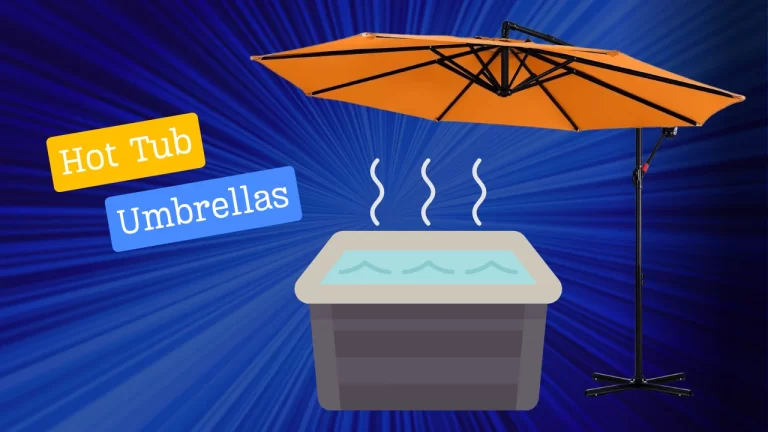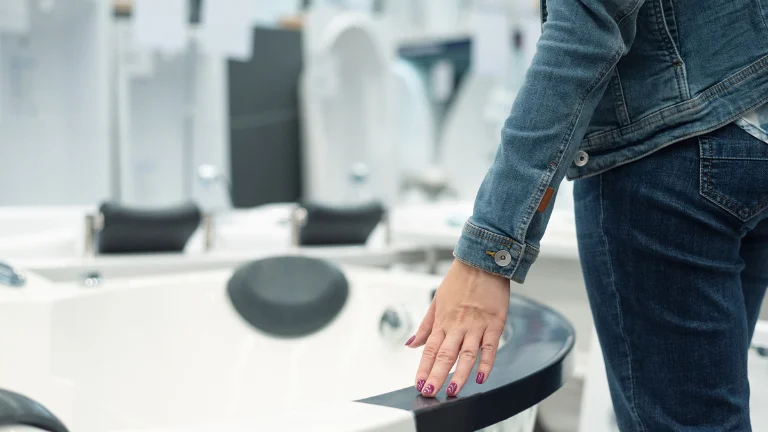Exploring Eastern Forms of Massage: Benefits, Techniques, and Where to Find Them
Massage therapy has deep roots across cultures, each offering its own way of healing the body and calming the mind.
If you’re standing at a crossroads, unsure whether to explore the ancient practices of Eastern massage or stick with the tried-and-true Western techniques, you’re not alone. These choices aren’t just about relaxation — they touch something deeper.
Eastern approaches often focus on energy and balance, while Western methods target the muscles and anatomy we know well. But here’s the heart of it: no matter what you’re seeking, whether it’s stress relief or physical recovery.

Eastern Massage Modalities
Massage techniques from Asia, rooted in centuries-old traditions, offer a holistic approach to healing that dates back thousands of years. These practices emphasize not just physical relaxation, but the integration of mind, body, and spirit for complete well-being.
What Are These Massage Practices?
In contrast to their Western counterparts, these massage methods focus on the body’s energy flow, referred to as “qi” in Traditional Chinese Medicine (TCM) or “prana” in Ayurveda. Drawing from ancient healing systems, the goal is to restore balance, encourage natural healing, and improve overall wellness.
These therapies, which involve pressure, stretching, and movement, are typically done without oils and with the recipient fully clothed. Designed to stimulate specific points on the body, they aim to relieve tension and enhance the flow of energy. All of this offers a refreshing way to let off some steam!
1. Tuina Massage: Ancient Chinese Bodywork
- What it is: A combination of deep tissue massage and acupressure.
- Key Techniques: Rolling, kneading, and tapping on pressure points.
- Benefits:
- Relieves muscle tension.
- Improves blood circulation.
- Problem it solves: Ideal for those suffering from physical pain, especially from injury or muscle tension.
2. Acupressure: Stimulating Energy Flow
- What it is: Pressure applied to specific points on the body to balance energy.
- How it works: Uses fingers, palms, or tools to apply firm pressure along meridian points.
- Benefits:
- Provides stress relief.
- Balances energy flow (Qi).
- Problem it solves: Effective for managing stress and tension.
3. Thai Massage: Dynamic Stretching for Flexibility
- What it is: A massage that combines deep pressure with assisted stretching.
- Key Techniques: Gentle pulling, stretching, and compression.
- Benefits:
- Improves flexibility.
- Relieves muscle stiffness.
- Problem it solves: Best for individuals needing enhanced flexibility and relief from tight muscles.
4. Shiatsu: Japanese Pressure Therapy
- What it is: A Japanese massage technique using finger pressure along energy channels.
- How it works: Finger pressure is applied to meridian points to restore energy balance.
- Benefits:
- Reduces stress.
- Alleviates tension.
- Problem it solves: A great alternative to acupuncture for those uncomfortable with needles.
5. Cupping: Ancient Suction Therapy
- What it is: A technique where cups create suction on the skin to stimulate blood flow.
- Key Techniques: Heated or vacuum-sealed cups placed on the skin.
- Benefits:
- Promotes muscle recovery.
- Releases toxins.
- Problem it solves: Effective for deep muscle tension and pain relief.
6. Guasha: Skin Scraping Therapy
- What it is: A scraping technique used to release tension and promote healing.
- Key Techniques: A smooth-edged tool is used to scrape the skin.
- Benefits:
- Reduces inflammation.
- Eases chronic pain.
- Problem it solves: Beneficial for those with chronic pain and inflammation.
7. Auricular Therapy: Ear Acupressure
- What it is: Acupressure therapy focused on the ear’s acupoints.
- How it works: Pressure is applied to points in the ear believed to connect with various organs.
- Benefits:
- Relieves headaches.
- Improves mental clarity.
- Problem it solves: Useful for those suffering from headaches and migraines.
8. Nutrition and Food Therapy in Eastern Modalities
- What it is: An approach that focuses on food and diet as a part of holistic healing.
- How it works: The food you eat affects your body’s energy flow and overall health.
- Benefits:
- Promotes long-term health and vitality.
- Increases energy levels.
- Problem it solves: Assists those looking for a holistic approach to wellness through dietary adjustments.
Popular Eastern Massage Modalities
| Massage Modality | Key Techniques | Benefits | Common Problems Solved |
|---|---|---|---|
| Tuina Massage | Deep tissue manipulation, acupressure | Muscle relaxation, improved circulation | Physical pain, muscle tension |
| Acupressure | Pressure on meridian points | Stress relief, energy balance | Stress, anxiety, fatigue |
| Thai Massage | Assisted stretching, deep pressure | Flexibility, muscle relief | Stiffness, reduced mobility |
| Shiatsu | Finger pressure along energy channels | Relaxation, tension release | Stress, tension, fear of needles |
| Cupping | Suction therapy | Deep muscle relaxation, toxin release | Deep muscle tension, recovery from injuries |
| Guasha | Scraping the skin with a smooth tool | Reduces inflammation, chronic pain relief | Chronic pain, inflammation |
| Auricular Therapy | Pressure on ear acupoints | Headache relief, mental clarity | Headaches, migraines |
| Nutrition & Food Therapy | Dietary adjustments | Holistic healing, increased energy | Long-term wellness, dietary improvement |
Brief History and Origins
Each form of Eastern massage has its unique origins and historical context:
- Shiatsu Massage: Originating in Japan, Shiatsu means “finger pressure.” It involves applying pressure to various points on the body using the fingers, thumbs, and palms. It is influenced by traditional Chinese medicine and aims to balance the body’s energy.
- Thai Massage: Developed over 2,500 years ago in Thailand, Thai massage combines acupressure, Ayurvedic principles, and assisted yoga postures. It is known for its dynamic and flowing movements that stretch and mobilize the body.
- Ayurvedic Massage: Rooted in the ancient Indian system of Ayurveda, this massage uses oils and focuses on balancing the three doshas (Vata, Pitta, and Kapha). It aims to detoxify the body, enhance circulation, and promote overall health.
- Tui Na Massage: An integral part of Traditional Chinese Medicine, Tui Na involves rhythmic compression techniques along the body’s energy channels and a variety of manipulations. It is used to treat specific illnesses and injuries.
Types of Eastern Massage Techniques
Eastern massage techniques offer diverse therapeutic benefits, each with its unique approach and methodology. Let’s explore the most popular forms of Eastern massage and what makes each one distinct.
Shiatsu Massage
Shiatsu, which translates to “finger pressure” in Japanese, is a massage technique that originated in Japan. Traditional Chinese Medicine influences it and aims to balance the body’s energy, or “qi,” by applying pressure to specific points along its meridians.
Essential Techniques and What to Expect
During a Shiatsu session, practitioners use their fingers, thumbs, palms, and sometimes elbows and knees to apply rhythmic pressure to various points on the body. This is often accompanied by gentle stretching and joint manipulation. Shiatsu is typically performed on a mat or futon with the recipient fully clothed.
Health Benefits
Shiatsu can help alleviate stress, reduce muscle tension, improve circulation, and enhance the body’s natural healing abilities. It is also known for its effectiveness in relieving chronic pain, headaches, and digestive issues.
Thai Massage
Thai massage has a history of over 2,500 years and is deeply rooted in Thai culture. It combines acupressure, Indian Ayurvedic principles, and assisted yoga postures. The practice is designed to unblock energy pathways and promote the flow of “lom” (air) throughout the body.
Unique Techniques and Therapeutic Benefits
Thai massage is often described as passive yoga. Practitioners use their hands, thumbs, elbows, knees, and feet to apply pressure and stretch the body in dynamic and flowing movements. This type of massage is performed on a mat on the floor, with the recipient fully clothed.
Typical Session Structure
A typical Thai massage session involves a sequence of rhythmic pressing and stretching movements that work on the entire body. The practitioner uses their body weight to apply pressure, helping to improve flexibility, relieve muscle and joint tension, and enhance overall relaxation.
Ayurvedic Massage
Ayurvedic massage is an integral part of Ayurveda, the ancient Indian system of medicine that balances the body’s three doshas: Vata, Pitta, and Kapha. This type of massage uses warm herbal oils tailored to the individual’s constitution and specific needs.
- Abhyanga: A full-body oil massage that nourishes the skin, improves circulation and promotes relaxation.
- Shirodhara: Involves pouring warm oil over the forehead to calm the mind and nervous system.
- Marma Therapy: Focuses on stimulating vital energy points to enhance physical and mental well-being.
Benefits for Mind and Body
Ayurvedic massage helps detoxify the body, improve lymphatic drainage, enhance skin health, and promote mental clarity. It is also effective in relieving stress, reducing inflammation, and boosting the immune system.
Tui Na Massage
Tui Na, which means “push and grasp” in Chinese, is a therapeutic form of massage that is a critical component of Traditional Chinese Medicine. It treats musculoskeletal conditions and internal disorders by manipulating the body’s energy channels.
Techniques Used and Their Purposes
Tui Na involves various methods to stimulate specific acupressure points and meridians, including kneading, rolling, pressing, and rubbing. Practitioners may also use stretching and traction to improve joint mobility and reduce pain.
Physical and Mental Health Benefits
Tui Na effectively treats various conditions, including back and neck pain, arthritis, headaches, and digestive issues. It also helps reduce stress, improve sleep, and enhance overall vitality.

Health Benefits of Eastern Massage Techniques
Eastern massage techniques offer a multitude of health benefits that go beyond mere relaxation. Each type of massage targets specific health concerns and contributes to overall well-being through its unique methods and principles.
General Health Benefits
1. Stress Relief
Eastern massage techniques are highly effective in reducing stress levels. Focusing on energy flow and pressure points, these massages help calm the nervous system, lower cortisol levels, and induce deep relaxation.
2. Pain Management
Many eastern massages, such as Shiatsu and Tui Na, are particularly effective in alleviating chronic pain. By targeting specific acupressure points and manipulating soft tissues, these massages can reduce pain and improve mobility in conditions like arthritis, back pain, and fibromyalgia.
Improved Circulation and Flexibility Techniques such as Thai massage involve dynamic stretches and pressure applications that enhance blood flow and flexibility. This improves oxygen and nutrient delivery to tissues and helps remove toxins from the body.
Specific Benefits for Different Conditions
Chronic Pain Eastern massage techniques can be valuable in managing chronic pain conditions. For instance, Shiatsu massage helps release endorphins, the body’s natural painkillers, and improves circulation to the affected areas, providing long-term pain relief.
- Anxiety and DepressionAyurvedic and Shiatsu massages are known for their mental health benefits. By balancing the body’s energy and promoting relaxation, these techniques help reduce symptoms of anxiety and depression. Shirodhara, a form of Ayurvedic therapy, is especially effective in calming the mind and improving mental clarity.
2. Sports Injuries and Rehabilitation Thai and Tui Na massages are often used in sports injury rehabilitation. Their techniques improve joint mobility, reduce muscle stiffness, and accelerate the healing of soft tissue injuries. These massages also help prevent future injuries by improving flexibility and strength.
Eastern vs. Western Massage
Choosing the right massage technique depends on understanding the key differences between Eastern and Western approaches. While both offer relief and therapeutic benefits, their core philosophies, techniques, and goals vary.
Eastern Massage vs. Western Massage
- Approach:
- Eastern Massage: Focuses on holistic healing, where the mind, body, and energy flow are interconnected. The goal is to restore balance to the body’s energy (Qi or Prana) and promote natural healing.
- Western Massage: Primarily focuses on the anatomy and muscle groups. Western techniques target specific physical problems, like muscle tension, injuries, or improving blood circulation.
- Philosophy:
- Eastern Massage: Based on ancient healing traditions such as Traditional Chinese Medicine (TCM) and Ayurveda. These techniques focus on balancing energy within the body and often incorporate the use of meridians or energy pathways.
- Western Massage: Rooted in modern medical understanding of anatomy and physiology. Techniques like Swedish massage and deep tissue massage emphasize muscle manipulation and improving circulation.
- Techniques:
- Eastern Massage: Includes practices like acupressure, Shiatsu, Thai massage, Tuina, and cupping. These methods often involve stretching, pressure on energy points, and minimal use of oils.
- Western Massage: Techniques include Swedish massage, deep tissue massage, and sports massage, focusing on muscle relaxation, pain relief, and injury recovery.
- Cultural Influence:
- Eastern Massage: Draws heavily from spiritual and philosophical traditions in China, India, and Japan, where energy balance and prevention of illness are emphasized.
- Western Massage: Primarily developed in Europe and North America, focusing on physical health and scientific understanding of the body.
- User Problem Addressed:
- “Which massage technique should I choose based on my needs?”
Answer: Choose Eastern modalities if you seek holistic healing, energy balance, or relief from stress and tension. Opt for Western techniques if you need targeted muscle relief, injury recovery, or improved circulation.
- “Which massage technique should I choose based on my needs?”
| Aspect | Eastern Massage Modalities | Western Massage Modalities |
|---|---|---|
| Philosophy | Holistic, energy-based (Qi/Prana) | Physical, anatomy-based |
| Techniques | Acupressure, Thai, Shiatsu, Tuina, Cupping | Swedish, Deep Tissue, Sports Massage |
| Focus | Energy balance, mind-body connection | Muscle relaxation, injury recovery |
| Cultural Roots | Traditional Chinese Medicine, Ayurveda, Japanese Healing | European and American medical traditions |
| Tools Used | Hands, fingers, cups, scraping tools | Hands, fingers, oils, lotions |
| Recipient’s Clothing | Fully clothed in most modalities | Usually unclothed, with draping |
| Goal | Restore balance, prevent illness, promote holistic health | Relieve muscle tension, improve circulation, treat injuries |
Finding the Right Practitioner or Center
Choosing the right practitioner or center for your eastern massage therapy ensures a positive and beneficial experience. Here are some tips and guidelines to help you make an informed decision.
Choosing a Massage Practitioner
Qualifications and Certifications
When selecting a massage practitioner, one must check their qualifications and certifications. Look for practitioners who have received formal training and are certified in the specific type of eastern massage you are interested in. Certifications from reputable institutions and professional associations can be a good indicator of their expertise and credibility.
Experience and Specialization
Consider the practitioner’s experience and specialization. Practitioners who have been in the field for several years and specialize in specific types of massage, such as Shiatsu, Thai, or Ayurvedic, will likely have a deeper understanding and skill set in those areas. Ask about their experience with treating conditions similar to yours.
Importance of Reviews and Testimonials
Reading reviews and testimonials from previous clients can provide valuable insights into the practitioner’s skills, professionalism, and overall experience. Look for feedback on their technique, communication, and the results clients have experienced. Online platforms like Google Reviews, Yelp, and specialized wellness websites can be valuable resources.
Questions to Ask Before Booking
Before booking a session, it’s helpful to ask the practitioner some key questions:
- What specific training and certifications do you have?
- How many years of experience do you have with this type of massage?
- Can you explain your approach and techniques in detail?
- Have you treated clients with conditions or needs similar to mine?
- What should I expect during and after the session?
Top-Rated Centers and Practitioners
Recommendations for Major Cities
If you live in a major city, finding top-rated massage centers and practitioners can be more accessible due to the broader availability of services. Look for centers specializing in eastern massage techniques with a strong reputation for quality and professionalism. Personal recommendations from friends or family can also be valuable.
How to Find Reliable Centers Locally
For smaller towns or rural areas, finding a reliable center might require more research. Check local wellness directories, community boards, and online search engines. You can also ask for recommendations from local health and wellness professionals, such as chiropractors, physical therapists, or yoga instructors.
Online Platforms and Resources for Booking
Several online platforms and resources can help you find and book Eastern massage therapies:
- Wellness Websites: Mindbody, SpaFinder, and Booksy allow you to search for massage practitioners and centers, read reviews, and book appointments online.
- Social Media: Many practitioners and centers have social media profiles sharing information about their services, client testimonials, and promotions.
- Local Directories: Local business directories, such as Yelp and Google My Business, provide listings of nearby massage centers along with ratings and reviews.
Personal Experiences and Reviews
Understanding the personal experiences of others can provide valuable insights into the benefits and effectiveness of different Eastern massage techniques. Here, we share real-life testimonials and comparisons to help you decide which massage therapy might be right for you.
Customer Testimonials
Shiatsu Massage Experiences
Many clients who have experienced Shiatsu massage report significant relief from chronic pain and stress. One client shared, “After just a few sessions of Shiatsu, my back pain improved dramatically. The pressure applied to specific points felt intense but was incredibly effective in releasing tension.”
Thai Massage Success Stories
A frequent visitor to Thai massage sessions described the experience as transformative: “The combination of deep pressure and stretching in Thai massage helped me regain flexibility and reduce muscle stiffness. I felt energized and rejuvenated after each session.”
Ayurvedic Massage Transformations
Ayurvedic massage clients often highlight the profound effects of relaxation and detoxification. One noted, “The use of warm herbal oils in Ayurvedic massage made my skin feel amazing, and I noticed a significant improvement in my overall energy levels and mental clarity.”
Tui Na Massage Benefits
Tui Na massage has been praised for its therapeutic benefits in treating specific conditions. A client with arthritis mentioned, “Tui Na helped me manage my arthritis pain better than any other therapy I tried. The rhythmic compression and stretching techniques provided long-lasting relief.”
Comparing Techniques
Pros and Cons of Each Technique
- Shiatsu Massage
- Pros: Effective for pain relief, no need for oils or undressing, promotes relaxation.
- Cons: It can be intense for some people and may require multiple sessions for significant results.
- Thai Massage
- Pros: Enhances flexibility, incorporates yoga-like stretches, and offers a holistic approach to wellness.
- Cons: It can be physically demanding and unsuitable for those with certain medical conditions.
- Ayurvedic Massage
- Pros: It uses therapeutic oils, is deeply relaxing, and is tailored to individual doshas.
- Cons: Oil can be messy, and sessions can be longer and more expensive.
- Tui Na Massage
- Pros: Targets specific health issues, integrates well with other TCM treatments, and requires no oils.
- Cons: It can be intense and not as widely available as other types of massage.
How to Decide Which Massage Type is Best for Your NeedsWhen deciding which Eastern massage technique to try, consider the following factors:
- Your Health Goals: Identify your primary health concerns and goals. For example, Shiatsu or Tui Na might be more suitable if you’re looking to relieve chronic pain. Thai massage could be the best choice for improved flexibility and energy.
- Personal Preferences: Consider whether you prefer a more vigorous massage (like Thai) or a deeply relaxing experience (like Ayurvedic).
- Medical Conditions: Consider any medical conditions you have. Consult a healthcare provider if you’re unsure which massage is safe.
- Availability: Research the availability of skilled practitioners in your area for each type of massage.
Learning and Practicing Eastern Massage
Books and Online CoursesA: A wealth of books and online courses cover the theory and practice of Eastern massage techniques. Here are our recommendations:
- Books:
- “The Book of Shiatsu” by Paul Lundberg: A comprehensive guide on the principles and techniques of Shiatsu massage.
- “Thai Massage: A Traditional Medical Technique” by Richard Gold: This book offers detailed insights into Thai massage’s history, techniques, and benefits.
- “Ayurvedic Massage Therapy” by Subhash Ranade: A deep dive into the different types of Ayurvedic massage and their therapeutic uses.
- “Tui Na: A Manual of Chinese Massage Therapy” by Sarah Pritchard: An essential resource for learning Tui Na’s basics and advanced techniques.
- Online Courses:
- Shiatsu: Look for courses on platforms like Udemy or Coursera that offer Shiatsu massage certification and training.
- Thai Massage: Many websites, such as Learn Thai Massage, provide online courses with video demonstrations and certification options.
- Ayurvedic Massage: Institutes like Kerala Ayurveda Academy offer online courses and workshops on Ayurvedic massage techniques.
- Tui Na: Online courses provided by traditional Chinese medicine schools often include Tui Na training modules.
DIY Massage Techniques
Basic Techniques You Can Try at Home
- Shiatsu: Use your fingers to apply gentle pressure to acupressure points along your arms, legs, and back. Focus on areas that feel tense or sore.
- Thai Massage: Practice simple stretches inspired by Thai massage, such as the “cat stretch” for your back and shoulders.
- Ayurvedic Massage: Before showering, perform self-massage (Abhyanga) with warm sesame or coconut oil. Apply the oil in circular motions on your joints and long strokes on your limbs.
- Tui Na: Try basic techniques like pressing and kneading on your shoulders and neck to relieve tension.
Recommended Tools and Products
Using the right tools and products can enhance your DIY massage experience:
- Shiatsu: Acupressure mats and pillows can help you quickly target specific points.
- Thai Massage: Yoga mats and bolsters provide support during self-stretching exercises.
- Ayurvedic Massage: High-quality herbal oils, such as sesame or coconut oil, are essential for self-massage.
- Tui Na: Hand-held massage tools and wooden rollers can help you apply pressure more effectively.
Don’t forget to subscribe to Hot Tub Patio for more tips on health, wellness, and creating your perfect relaxation space. Join our community and start your journey to a balanced and rejuvenated life today!
Which eastern massage technique are you most interested in trying, and why?













